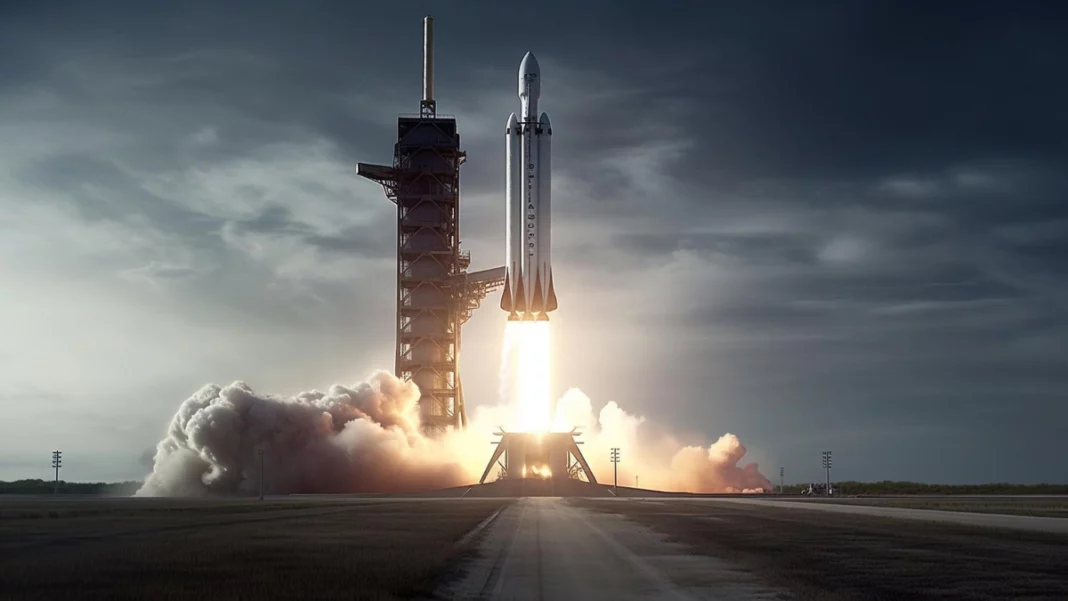India has achieved an amazing milestone with the flawless touchdown of the Lander Module from ISRO’s third lunar endeavor, Chandrayaan 3, marking the country’s successful arrival on the lunar soil. Notably, this achievement also establishes India as the first ever nation to achieve a soft landing near the Moon’s southern pole.
Having embarked on its journey on July 14, the Lander Module of the Indian Space Research Organisation’s (ISRO) Chandrayaan-3 mission gracefully made its way to the lunar expanse and elegantly landed on August 23. This accomplishment solidified India’s position as the fourth nation globally, following the former USSR, the United States, and China, to accomplish a soft lunar landing. Prime Minister Modi congratulated the ISRO scientific team, emphasizing that India’s success in lunar exploration is a collective achievement resonating with the ethos of global unity and progress.
At precisely 6:03 p.m., the Lander delicately touched down on the lunar surface, sparking jubilant festivities at the Mission Operations Complex (MOX) situated within the ISRO Telemetry, Tracking, and Command Network (ISTRAC) in Bengaluru. After this feat, the Lander seamlessly deployed the Rover, primed to conduct on-site chemical analyses of the lunar topography throughout its mobility phase. The Lander and the Rover, equipped with scientific instruments and boasting a mission duration of 1 Lunar day, equivalent to 14 Earth days, are responsible for executing a series of experiments on the lunar landscape.
Chandrayaan 3: A Fresh Start
Building upon the lessons learned from Chandrayaan-2, Chandrayaan 3 is the third mission in India’s lunar exploration program. Unlike its predecessor, Chandrayaan-3 focuses on achieving a successful soft landing on the Moon’s surface, omitting the rover component. This mission aims to rectify the setback faced by Chandrayaan-2’s lander, Vikram, which unfortunately crash-landed on the Moon.
What Is a Soft Landing? And Why Did Chandrayaan 3 Land at the Moon’s South Pole?
As per ISRO’s explanation, the mission encompasses three primary goals: showcasing a secure and gentle touchdown on the lunar terrain, demonstrating the mobility of a Rover across the lunar surface, and executing on-site scientific experiments.
Soft landing refers to a spacecraft’s gentle and controlled descent, minimizing the risk of damage.
This approach effectively demonstrates a spacecraft’s technical prowess. The chosen landing site is located near the Moon’s southern pole, specifically at a latitude of 70 degrees.
Historically, all prior lunar landings have taken place in the vicinity of the Moon’s equatorial region, primarily due to such locations’ relative ease and safety. The terrain and temperature conditions there are more conducive for prolonged instrument operation. Additionally, ample sunlight facilitates a consistent energy supply for solar-powered instruments.
In contrast, the lunar polar regions present unique challenges. Numerous areas within these regions remain perpetually shadowed, lacking sunlight and enduring temperatures below -230 degrees Celsius. This harsh environment complicates instrument functionality. Moreover, these polar regions are characterized by vast craters.
Consequently, the lunar polar areas have largely remained unexplored. The extreme cold suggests that anything trapped in these regions would remain preserved over time, undergoing minimal change. The rocks and soil in the Moon’s northern and southern poles thus hold the potential to offer insights into the early stages of the Solar System.
What Next After the Successful Landing of Chandrayaan-3?
Typically, spacecraft transport specific instruments and experiments, known as payloads, that undertake observations and data collection within space. Subsequently, this gathered data is transmitted back to Earth, where scientists conduct analysis and research.
The six payloads aboard the Vikram lander and the Pragyan rover remain consistent with those of the preceding mission. The lander will host four scientific payloads to investigate lunar seismic activity, thermal characteristics of the lunar surface, variations in the plasma surrounding the Moon, and a passive experiment facilitating precise measurement of the Earth-Moon distance. Notably, the fourth payload is a contribution from NASA.
Conversely, the Rover accommodates two distinct payloads; each devised to examine the chemical and mineral composition of the lunar expanse. These payloads additionally strive to ascertain the proportions of elements such as magnesium, aluminium, and iron within the lunar soil and rock formations.
Goals and Scientific Objectives
-
Lunar Surface Analysis
Chandrayaan-3’s primary goal is to study the Moon’s surface up close. It will also gather critical data about its composition, mineralogy, and potential resources. This information can provide insights into the Moon’s geological evolution and relationship with Earth.
-
Technological Advancement
The mission presents an opportunity for ISRO to exhibit its technical expertise and innovative capabilities in space exploration. Successfully landing a spacecraft on the Moon’s surface is a challenging feat. And it can lead to advancements in landing technology for future missions.
-
Enhanced Navigation and Guidance
Chandrayaan-3 will likely implement improved navigation and guidance systems, incorporating lessons learned from previous missions. This could pave the way for more accurate and reliable landing capabilities in future space endeavours.
Anticipated Outcomes
-
Data Richness
Chandrayaan-3 could provide a wealth of data about its topography, mineral composition, and potential water ice reserves. This information could be invaluable for planning future lunar missions, including manned missions.
-
Inspiration and Education
Chandrayaan-3, like its predecessors, has the potential to inspire generations of young minds to pursue careers in science, technology, engineering, and mathematics (STEM). The mission’s success could testify to India’s prowess in space exploration and encourage more students to engage with scientific disciplines.
Conclusion
The successful landing of Chandrayaan 3 will surely play a significant role in accelerating India’s space research and mission by manifold. It will immensely inspire the young generations to take up space as their field of interest. Moreover, as a developing nation, India’s prestige and honour will get a huge boost in front of rest of the world. It will indirectly impact the Indian economy. Many foreign companies, corporations, and investors will take India seriously and invest here. So, this mission of Chandrayaan-3 will open up a great path of opportunity, growth and success for India in future.


